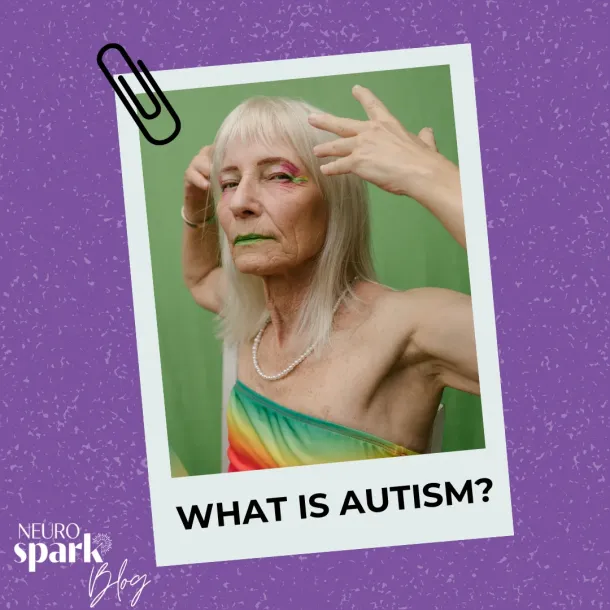
Table of Contents:
What Are Sensory Processing Sensitivities?
Sensory processing sensitivity is a trait characterized by a heightened response to sensory stimuli, such as sights, sounds, textures, smells, and even internal sensations like hunger or pain. For individuals with sensory processing sensitivities, the world can feel overwhelmingly intense, as their nervous systems are finely tuned to detect and respond to sensory input. This heightened sensitivity is not simply a quirk; it’s a deeply ingrained aspect of their neurobiology.
Sensory processing sensitivities can manifest in various ways as people have different sensory profiles. Some people might be particularly sensitive to bright lights or loud noises, while others might be more affected by the texture of certain fabrics or the sensation of a crowded room. These sensitivities can lead to discomfort, stress, and even pain, making everyday environments challenging to navigate.
Neurodivergences That Include Sensory Sensitivities
Sensory processing sensitivities are commonly associated with several different neurotypes. Understanding your neurotype and how you individually respond to certain stimuli can help you learn ways to accommodate yourself and protect your nervous system from becoming overstimulated.
Autism
One of the most well-known neurodivergences associated with sensory processing sensitivities is autism. Autistic individuals often experience heightened responses to sensory stimuli. This can include sensitivity to loud noises, bright lights, certain textures, or even specific tastes and smells. For many autistic people, sensory sensitivities are a core aspect of their experience, influencing how they interact with the world and others. Personally, I experience significant sensory sensitivities to sound. Loud, sudden noises, especially ones that are high-pitched, are particularly painful to me. I usually have “over the top” responses that others don’t understand. Even as a kid, I remember sitting at the dinner table and having to clap my hands over my ears and yelp in pain when my grandpa scraped his knife on the plate. Now, as I understand myself through an autistic lens, I have a better knowledge of why I am sensitive to sounds and other stimuli and, therefore, how to accommodate for them.
Personally, I have come to learn that I need to avoid wearing overstimulating clothes, especially when I’m having a rough sensory day. I opt for soft fabrics without tags (or I cut the tags out). Also, I always have my Loops, noise-canceling headphones, or ear defenders on me at all times, just in case I’m met with an environment that is too loud for me. I also wear sunglasses when I feel overstimulated, both outdoors and indoors. Sometimes, lights are just too bright for me, and I’ve decided to just do what I need to do to accommodate myself without shame.
ADHD
ADHDers may also experience sensory processing sensitivities, though this aspect of their experience is often less discussed. People with ADHD also stim. For ADHDers, sensory overload can exacerbate challenges like distractibility, impulsivity, and restlessness. Loud noises, cluttered environments, or strong smells can become overwhelming, making it difficult for them to focus or feel at ease.
Sensory sensitivities in ADHD can also contribute to challenges with emotional regulation, as individuals may become easily frustrated or overwhelmed when their sensory needs are not met. Understanding and managing these sensitivities can be a key part of managing ADHD symptoms.
While being AuDHD makes it difficult to determine which aspects of my neurotype are impacted by autism and which aspects are impacted by ADHD, there are certain sensory experiences that more align with my ADHD traits. I am very easily distracted by sensory stimuli. If the stimulus isn’t necessarily making me overstimulated, but it’s preventing me from focusing on what I’m doing, even if it’s something I enjoy, I know that I need to either remove the stimulus or protect myself from it. For example, I can’t focus on anything if there is music playing or people talking in the background. I might not necessarily have the same physiological overstimulation response as I do with other sounds due to being autistic, but I do find that I’m literally not capable of ignoring these types of sounds, no matter how hard I try. I have to put on headphones or remove myself if I want to get anything done. Before I understood my neurotype, I would have shamed myself or been shamed by others for not being able to focus if I was in a coffee shop or in a noisy classroom. However, now that I understand neurodivergence, I know that this is just an aspect of my experience and isn’t an inherent flaw. It may be disabling in certain situations, but with the right support, I can still find ways to accommodate myself.
Highly Sensitive People (HSPs)
Highly Sensitive People (HSPs) share many characteristics with those who have sensory processing sensitivities. HSPs have a heightened awareness of and response to sensory stimuli, often leading to overwhelm in environments that others might find perfectly normal. This trait can make HSPs deeply empathetic and perceptive, but it also requires careful management of sensory input to avoid burnout.
HSPs may find themselves needing more time alone to recharge, avoiding crowded or noisy places, or seeking out environments that are calming and soothing. Understanding their sensory sensitivities is key to living a balanced and fulfilling life.
I’ve always known that I’m far more sensitive than those around me. I felt seen for the first time in my life when I learned about HSPs. Something that is very overstimulating to me is being around a group of people who are highly emotional. I enjoy deep, emotional conversations; they give me joy and purpose in life. However, I need to be in a regulated state in order to be comfortable with them. I remember being at church as a kid and feeling completely dysregulated by the emotions of those around me. With lots of crying, singing, prayer, and other emotional things going on, my nervous system was picking up on everything everyone else was experiencing. It was far too much for me to handle! Now that I know how sensitive I am to others’ emotional experiences, I know one of the reasons I would always leave church feeling distraught was because I’m like a sponge. I have to be extra careful with who, when, and how I engage in emotional experiences, especially when it’s with a larger group of people.
Sensory Processing Disorder (SPD)
Sensory processing disorder (SPD) is where the brain has difficulty receiving and responding to information that comes in through the senses. This can result in hypersensitivity (over-responsiveness) or hyposensitivity (under-responsiveness) to sensory stimuli. Individuals with SPD may struggle with everyday activities due to their sensory sensitivities, and they may need specific interventions to help them manage their sensory experiences.
SPD can occur alongside other neurodivergent experiences, such as autism or ADHD, but it can also exist on its own. Understanding SPD and its impact on daily life is crucial for providing appropriate support and accommodations.
Accommodating Sensory Sensitivities
Having sensory sensitivities requires careful management of one’s environment and routines to reduce sensory overload and create a sense of comfort and safety. Sometimes, we need to get creative with ways to accommodate ourselves in order to live our fullest, truest lives.
Creating a Sensory-Friendly Environment
One of the most effective ways to manage sensory sensitivities is to create a sensory-friendly environment that can act as a safe space. This might involve making adjustments to your home, workspace, or other areas where you spend significant time.
- Lighting: Opt for soft, natural lighting whenever possible. Avoid fluorescent lights, which can be harsh and flicker subtly, causing discomfort. Use lamps with dimmers to control the brightness, or invest in warm-colored LED bulbs that mimic natural light. Some people like color-changing lights in sensory spaces that offer a small amount of stimuli, but that they can still have control over, like lava lamps.
- Sound: Consider using noise-canceling headphones, earplugs, or ear defenders to reduce exposure to loud or disruptive noises. It can be nerve wracking at first to start wearing headphones or earplugs out and about in your daily life, but it’s important to remember that not only are most people more focused on themselves than on you and will probably not even notice that you’re wearing anything on your ears, but also that you have every right to accommodate your needs in a world that is not built for you.
- Textures: Be mindful of the fabrics and materials you come into contact with daily. Choose clothing, bedding, and furniture that feels comfortable against your skin. Avoid scratchy, tight, or restrictive materials. When I first started working, I wore professional clothes that were highly uncomfortable and triggering for my sensory sensitivities because I thought that’s what you have to do. However, once I realized that it’s far more important for me to be comfortable and not trigger overstimulation than to wear what is “expected”, I began to opt for stretchy, comfy pants and loose-fitting shirts.
- Smells: If you’re sensitive to strong scents, try to avoid environments with heavy perfumes, cleaning products, or other strong odors. Use unscented products when possible, and consider using an air purifier to remove odors from the air. You can also wear a mask in public spaces which can help filter out the smells of other people and their perfumes.
- Visual Clutter: A cluttered environment can be overwhelming for those with visual sensitivities. Keep your spaces organized and free of unnecessary items. Opt for neutral or calming colors in your décor to reduce visual stimulation. If you have executive dysfunction, like myself and many others, I like to have a designated “doom basket” where I put my clutter if I don’t have the energy to actually put it away. This can keep my space visually appealing and calm even if I don’t have the spoons to clean the entire area.
Establishing Routines
Having predictable routines can help reduce the stress of sensory overload. Establishing regular patterns for daily activities can provide a sense of stability and control, making it easier to manage sensory sensitivities.
- Morning Routine: Start your day with a calming routine that prepares you for the sensory demands ahead. This might include gentle stretching, meditation, or enjoying a quiet breakfast in a peaceful setting. While it can be very tempting to start scrolling on your phone or jump on your computer to start working as soon as you wake up, it’s really important to have some time away from stress and screens so that your nervous system can stay calm and centered.
- Breaks and Downtime: Incorporate regular breaks throughout your day, especially if you’re in a stimulating environment. Use this time to step away from sensory input, engage in calming activities, or simply rest. Even if that means taking a few extra minutes in the bathroom so that you can do some deep breathing, even the smallest of regulating activities can be widely beneficial in how you feel throughout the day.
- Evening Wind-Down: Create an evening routine that helps you unwind and prepare for restful sleep. This might involve dimming the lights, turning off electronic devices, and engaging in soothing activities like reading or listening to calming music. Deep pressure stimuli, like using a weighted blanket or stuffed animal, can sometimes be especially helpful for some people after an overstimulating day. Additionally, going on a short evening walk can help clear the head and recenter your nervous system.
How to Create a Sensory Soothing Kit
A sensory soothing kit is a personalized collection of items that help you self-regulate and manage sensory overload. It’s a portable toolkit that you can use whenever you need to calm your senses and regain a sense of balance.
Step 1: Identify Your Sensory Triggers
Start by identifying the sensory stimuli that you find most challenging. Are you particularly sensitive to noise, light, texture, or smell? Knowing your triggers will help you choose the right items for your kit.
Step 2: Choose Calming Items
Select items or sensory toys that help you counteract sensory overload and create a sense of calm. Here is an example of what is in my sensory soothing kit that may give you some inspiration to create your own!
- For Sound: I always keep my Loops (a brand of earplugs) in my sensory kit. I also often bring my headphones everywhere I go, but my Loops are small enough to fit in my pencil case, which is helpful when I don’t want to carry anything extra.
- For Touch: I always have an assortment of stim toys in my kit. I usually have a metal spinning cube, a tangle, and a squeeze ball. I also always wear fidget rings that offer quick and subtle ways to stim without needing to get out my kit. I also keep hand sanitizer in my bag because any slight icky feeling on my hands is incredibly overstimulating to me.
- For Sight: I always have sunglasses on me because sometimes the lights in an environment are too bright for me.
- For Smell: I like to keep peppermint, lemon, and eucalyptus essential oils in my bag because I find these scents calming and helpful in bringing me out of anxiety or overstimulation.
- For Taste: I like to keep a couple of sticks of gum in my kit because mint helps with the nausea I sometimes feel when I’m especially overstimulated. Sometimes, if I want to carry a larger bag, I’ll also bring a salty snack, which also helps with my dysautonomia.
Step 3: Personalize Your Kit
Your sensory soothing kit should reflect your unique needs and preferences. Include any items that bring you comfort, even if they don’t fit into the categories above. This might be a favorite book, a journal, or a small object with sentimental value. If I’m traveling out of town, I always bring my stuffed Pooh Bear that I’ve had since I was 2. This helps me stay grounded when I’m in a new place and when my routine is disrupted when traveling.
Step 4: Make It Portable
Choose a small bag or container that’s easy to carry with you. Your kit should be portable enough to take wherever you go, whether it’s to work, school, or social events. Having your sensory soothing kit on hand ensures that you’re always prepared to manage sensory overload. I keep my small items in a pencil case. If I’m traveling, I’ll bring a bigger bag with more items so that I have every option to help calm myself.
How Neurodivergent Coaching Can Help People with Sensory Processing Sensitivities
Navigating life with sensory processing sensitivities can be challenging, but neurodivergent coaching offers a valuable resource for those seeking support. Neurodivergent coaches specialize in understanding the unique experiences of neurodivergent individuals, including those with sensory sensitivities. They provide personalized guidance and strategies to help you manage your sensitivities and thrive in your daily life.
Developing Personalized Strategies
One of the primary benefits of working with a neurodivergent coach is the development of personalized strategies to manage sensory sensitivities. A coach can help you identify your specific sensory triggers, understand how they impact your daily life, and develop coping mechanisms tailored to your needs. Sometimes, we don’t even realize what triggers we have because we are so used to being overwhelmed by them that we don’t realize that not everyone else experiences the sensitivities we do. A coach can help us realize where our triggers lie and how to accommodate them.
Building Self-Advocacy Skills
Advocating for your sensory needs is essential, whether at work, in social situations, or in your personal life. A neurodivergent coach can help you develop the confidence and communication skills needed to express your needs clearly and effectively.
This might involve practicing explaining your sensory sensitivities to others, setting boundaries in relationships or at work, or requesting accommodations that make your environment more manageable. By building self-advocacy skills, you can create a more supportive and understanding environment for yourself.
Building a Sense of Empowerment
Ultimately, neurodivergent coaching empowers you to live authentically and confidently with your sensory sensitivities. By working with a coach, you can gain a deeper understanding of your sensory needs, develop effective coping strategies, and build a life that honors your unique sensory experiences.
Conclusion
Sensory processing sensitivities are a significant aspect of many neurodivergent experiences, influencing how individuals interact with the world and others. Whether you’re autistic, ADHD, identify as a Highly Sensitive Person, or experience sensory processing disorder, understanding and managing your sensory sensitivities is key to living a balanced and fulfilling life.
By creating sensory-friendly environments, developing personalized routines, and utilizing tools like sensory soothing kits, you can better manage sensory overload and find comfort in your daily life. Additionally, neurodivergent coaching offers valuable support, helping you develop strategies, build self-advocacy skills, and increase emotional resilience.
Feel Seen, Heard, and Regulated
Sensory sensitivities aren’t something you need to “fix;” they’re part of how your brain interprets the world. Our team gets it because many of us live it, too. We offer affirming, practical support for autistic, ADHD, and highly sensitive adults across the U.S.
👉 Start with a free consult to find coaching or tools that work for your sensory system.

Cat Salladin, LSW
One Spark Can Light a Fire
Diagnosis can be the catalyst for significant momentum. It can represent a turning point for your life, where you can move forward equipped with new knowledge about yourself and a new framework to guide you in your journey.
A formal assessment provides an incredible opportunity to gain knowledge about who you are and how you see the world.



